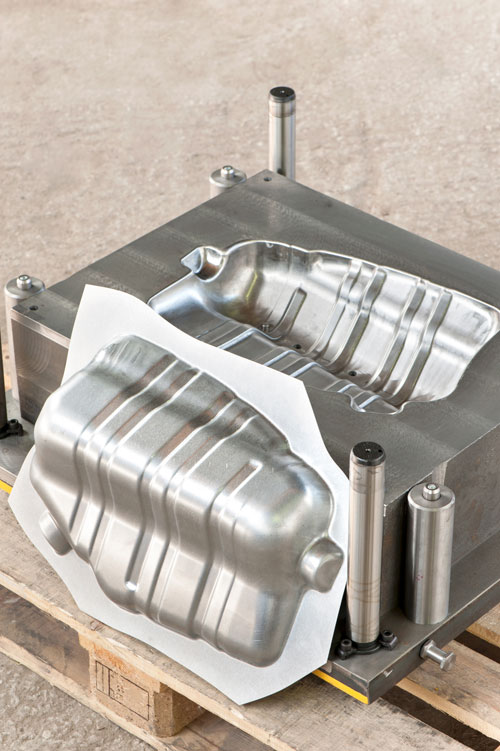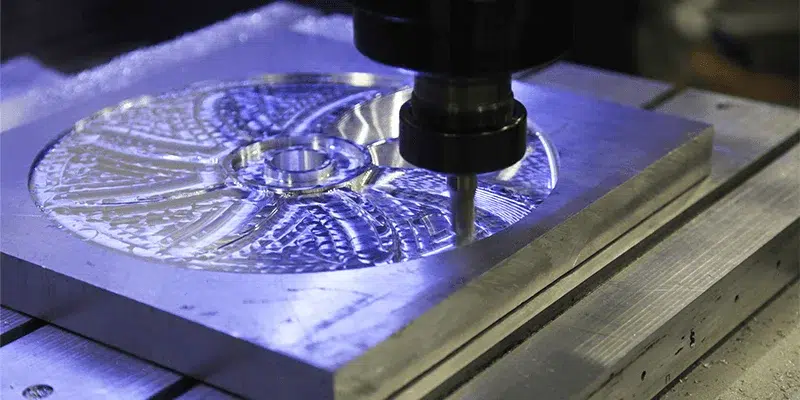How Aluminum Casting improves vehicle performance through efficient components
Wiki Article
A Comprehensive Overview to the Various Types and Applications of Aluminum Castings
Aluminum castings are vital components in various markets, recognized for their light-weight and resilient homes. Different casting techniques, such as sand, pass away, and financial investment casting, offer unique advantages customized to particular applications. Comprehending these processes is essential for choosing the right approach for a job. Each method has its one-of-a-kind advantages, affecting design and production choices. The exploration of these approaches exposes a much deeper understanding right into their influence on modern-day production.Review of Aluminum Castings
Aluminum castings are important elements in numerous industries, recognized for their lightweight and corrosion-resistant buildings. These castings are created via processes that allow for detailed designs and high dimensional precision. The convenience of aluminum makes it an optimal selection for an array of applications, from automotive parts to customer electronic devices. Due to its superb thermal and electrical conductivity, aluminum is also preferred in electric real estates and warm sinks. Furthermore, aluminum castings can be treated with various surface coatings, enhancing their aesthetic appeal and resilience. The product's recyclability includes in its sustainability qualifications, making it an eco-friendly option. Furthermore, the availability of various aluminum alloys enables producers to tailor the mechanical residential properties to certain requirements, offering enhanced toughness or improved resistance to put on. Overall, aluminum castings play a substantial duty in contemporary production, adding to the performance and performance of many products throughout diverse industries.Sand Casting: Refine and Applications
While different casting methods exist, sand casting stays among the most commonly made use of strategies as a result of its simpleness and adaptability. This procedure entails creating a mold and mildew from a combination of sand and a binding representative, enabling the manufacturing of complicated shapes with high dimensional accuracy. The aluminum is melted and put into the mold, where it takes the desired form as it cools down and solidifies.Sand casting is especially reliable for creating large components and low to tool volume runs, making it ideal for various sectors, consisting of auto, aerospace, and customer goods. Its convenience permits the casting of complex designs, fitting diverse requirements. Furthermore, sand molds can be recycled numerous times, improving cost-effectiveness. The convenience of sourcing products and the relatively reduced setup prices further add to its extensive fostering. On the whole, sand casting plays an essential function in the aluminum casting landscape, cultivating innovation and effectiveness.
Die Casting: Benefits and Makes use of
Die casting deals numerous advantages that make it a favored approach for producing aluminum components in numerous industries. This process enables high-volume manufacturing with remarkable dimensional accuracy and surface finish. The rapid solidification of aluminum throughout die casting results in a solid and resilient product, reducing the demand for substantial machining or completing processes.In addition, die casting enables the production of complex forms and elaborate designs, which can be testing to achieve with various other casting methods. The efficient usage of materials reduces waste, making it an affordable service for suppliers.
Applications of die casting period different markets, including automotive, aerospace, and consumer electronic devices, where lightweight and high-strength parts are vital. On the whole, pass away casting attracts attention for its capability to provide quality, effectiveness, and convenience in aluminum component production, solidifying its role in modern-day production techniques.
Financial Investment Casting: Precision and Detail
Investment casting is a precision production process that permits for intricate styles and comprehensive features in aluminum components (Aluminum Casting). This method provides countless benefits, including high dimensional accuracy and a smooth surface coating. Its flexibility makes it suitable throughout different sectors, from aerospace to medical toolsProcess Review
The financial investment casting process stands apart for its ability to create complex aluminum parts with amazing precision and information. This method starts with creating a wax or polymer pattern that is a reproduction of the desired component. Next off, the pattern is covered with a ceramic shell, which is after that heated up to harden. As soon as the shell is set, the wax is dissolved, leaving a dental caries in the covering. Fluid aluminum is poured right into this cavity, filling it to develop the last component. After cooling down, the ceramic shell is escaped, exposing the cast part. This process enables complex geometries and fine surface area coatings, making it appropriate for different applications, from aerospace to vehicle markets.Advantages of Investment Casting
Among the main benefits of financial investment casting hinges on its capability to provide high-precision elements with detailed information. This method enables the development of intricate geometries that are usually unattainable through other casting methods. Investment casting minimizes the requirement for substantial machining, minimizing product waste and production time. Additionally, it enables the usage of numerous aluminum alloys, enhancing the flexibility of the last item. The process is defined by a smooth surface finish, which can result in boosted capability and looks. In addition, investment casting is appropriate for both little and huge manufacturing runs, suiting a wide variety of markets. Generally, its precision and efficiency make financial investment casting a recommended choice for making parts needing precise specifications.Applications in Industry
While numerous casting methods serve specific functions, financial investment casting attracts attention for its extensive applications throughout multiple industries because of its unrivaled accuracy and information. This method is specifically favored in aerospace and automobile markets, where detailed parts require precise specs for safety and security and efficiency. Financial investment casting enables the production of complex shapes, such as generator blades and engine components, that conventional techniques can not accomplish. In addition, clinical tool makers use financial investment casting for creating extremely comprehensive instruments and implants, making certain biocompatibility and functionality. The electric and electronics industries likewise benefit, producing parts like housings and connectors that demand fine tolerances. Overall, financial investment casting's versatility and accuracy make it a necessary process in contemporary manufacturing across diverse fields.Comparison of Casting Methods

Sand Casting Advantages
Aluminum Casting Sand casting offers a number of advantages over various other casting techniques, especially when it comes to adaptability and cost-effectiveness. This strategy enables the manufacturing of complex shapes and large parts without the demand for expensive tooling. In addition, the sand used in this process is conveniently offered and economical, making it an appealing choice for both little and large production runs. The capability to recycle sand advertises sustainability and reduces product prices. Additionally, sand casting suits a selection of aluminum alloys, improving its flexibility for different applications. The procedure is also reasonably simple, which adds to shorter preparations and versatility in production. These aspects make sand casting a preferred option for several sectors seeking dependable and affordable services.Die Casting Performance
Although different casting approaches are offered, pass away casting stands apart for its effectiveness, especially in high-volume production circumstances. This approach uses high-pressure forces to infuse molten aluminum into a mold and mildew, leading to rapid cycle times and consistent item high quality. Contrasted to sand casting and financial investment casting, pass away casting considerably reduces product waste and permits detailed layouts with tight resistances. The capacity to produce big amounts of parts rapidly makes it ideal for sectors such as automobile and consumer products. In addition, die casting can facilitate using cheaper alloys, additionally enhancing its cost-effectiveness. On the whole, the efficiency of die casting makes it a preferred option for makers aiming to optimize both production rate and high quality.Investment Casting Accuracy
Investment casting is commonly acknowledged for its phenomenal precision in producing complex shapes and complex details. This method entails creating a wax pattern, which is coated in a ceramic covering, and ultimately dissolved, leaving a precise dental caries for liquified aluminum. Contrasted to various other casting approaches, such as sand casting or pass away casting, financial investment casting uses tighter tolerances and a smoother surface area finish. This precision makes it suitable for applications calling for high precision, such as aerospace and clinical tool parts. While the initial arrangement prices might be higher, the long-term advantages consist of decreased machining needs and constant top quality. Investment casting stands out as a recommended choice for intricate layouts and requiring requirements in various industries.Industry Applications of Aluminum Castings
Aluminum castings play a vital duty across many industries due to their lightweight, corrosion-resistant homes and excellent strength-to-weight ratio. In the automotive sector, aluminum castings are thoroughly used for engine components, transmission real estates, and structural parts, contributing to fuel efficiency and efficiency. The aerospace industry take advantage of aluminum castings in airplane frameworks, engine installs, and interior installations, where weight reduction is crucial.Additionally, the consumer electronic devices industry makes use of aluminum castings for rooms and parts, enhancing resilience while maintaining a smooth visual. In the construction industry, aluminum castings are utilized in building elements, home window frames, and structural supports, giving strength against weathering. Additionally, the marine industry favors aluminum castings for watercraft hulls and installations due to their resistance to saltwater deterioration. Overall, aluminum castings use functional remedies, satisfying varied needs throughout different applications while keeping high efficiency and integrity.

Future Patterns in Aluminum Casting Modern Technology
As industries continue to evolve, innovations in aluminum casting technology are positioned to improve manufacturing procedures and item style. Emerging patterns consist of the integration of automation and expert system, improving production and improving quality assurance. 3D printing is likewise gaining traction, permitting much more complicated geometries and lowered waste, consequently advertising sustainability. In addition, the growth of high-performance alloys is increasing the applications of aluminum castings, making it possible for industries to meet strenuous performance criteria.One more significant pattern is the boosting concentrate on recycling and the circular economy, with developments targeted at reusing aluminum scrap successfully. Market players are additionally buying clever production methods, including IoT for real-time surveillance and predictive maintenance. Ultimately, advancements in surface therapy modern technologies are improving the sturdiness and visual allure of aluminum castings. Collectively, these patterns signify a transformative duration in aluminum casting, driving effectiveness, sustainability, and technology throughout different industries.
Often Asked Inquiries
What Are the Ecological Influences of Aluminum Casting Processes?
The environmental impacts of aluminum casting processes include greenhouse gas emissions, power intake, and waste generation. These aspects contribute to air and water pollution, motivating the demand for lasting techniques and improved resource monitoring in the industry.Just How Can Aluminum Castings Be Recycled Properly?
Reliable recycling of aluminum castings includes accumulating scrap, getting rid of contaminants, and melting the aluminum to generate new castings. This process conserves energy, decreases waste, and lessens ecological influences, advertising a much more lasting manufacturing cycle.What Is the Typical Life-span of Aluminum Castings?
The regular life expectancy of aluminum castings differs substantially, often lasting in between 20 to 50 years depending on ecological elements, alloy composition, and application. Their durability makes them appropriate for various demanding industrial and architectural uses.Exist Any Wellness Threats Connected With Aluminum Casting?
Problems relating to health dangers related to aluminum casting consist of prospective direct exposure to fumes and dust. Prolonged inhalation may result in respiratory concerns, while skin get in touch with can cause irritability. Appropriate safety actions are crucial to alleviate these dangers.Exactly How Do Aluminum Castings Compare to Other Products in Stamina?
Aluminum castings show a beneficial strength-to-weight ratio compared to numerous products, including steel and plastics (Aluminum Casting). They are lightweight yet strong, making them optimal for applications needing durability without extreme weight, such as vehicle and aerospace componentsReport this wiki page